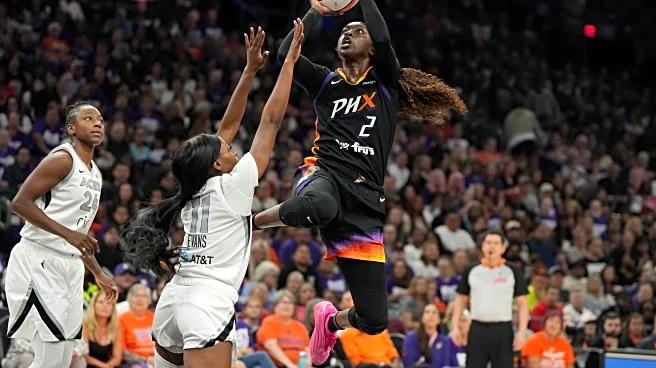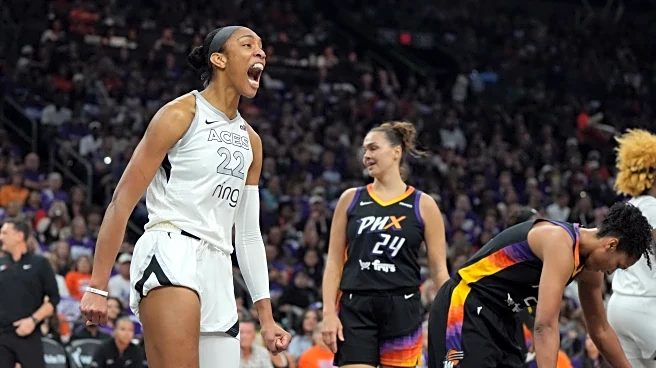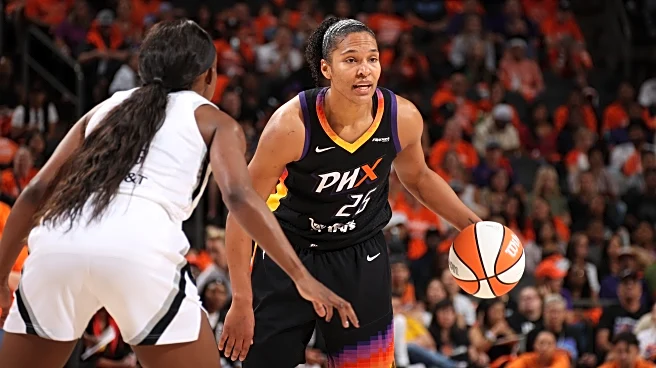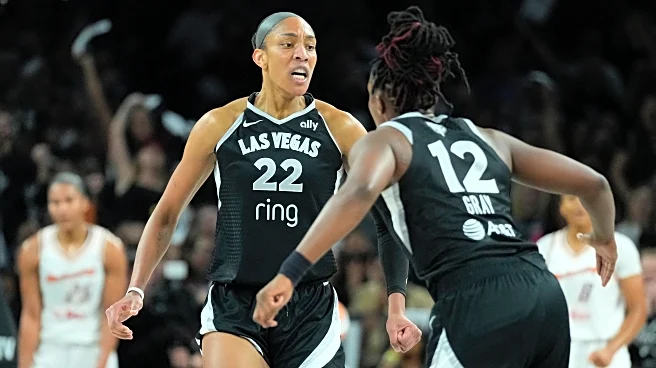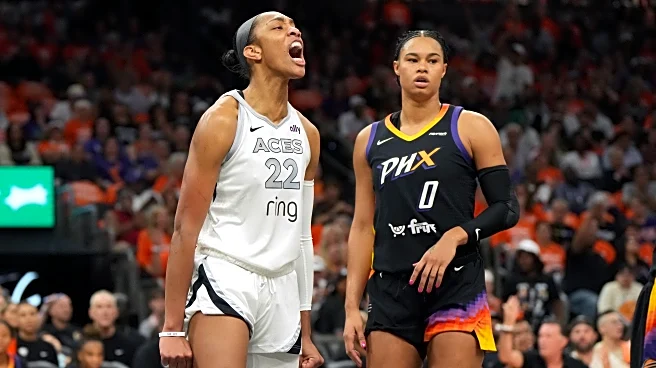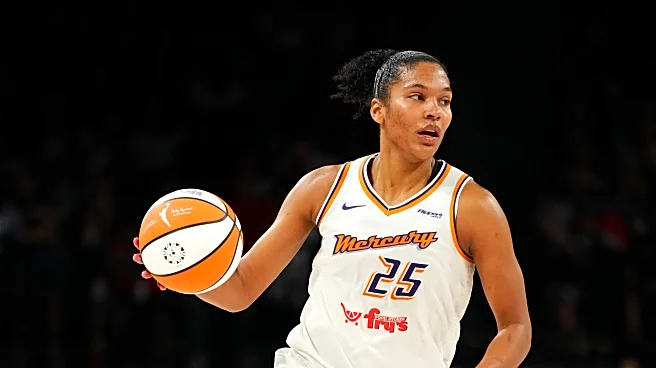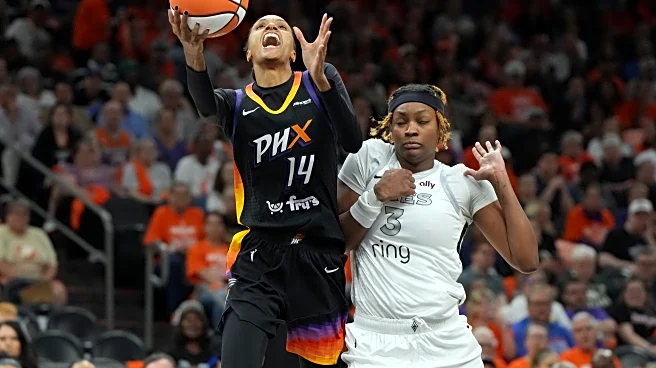What's Happening?
During Game 3 of the 2025 WNBA Finals, Phoenix Mercury's star player Satou Sabally suffered a head injury after colliding with an opponent's leg while attempting a rebound. The incident occurred on October 8, and Sabally was visibly in pain, requiring assistance to leave the court. The handling of her injury has sparked controversy, as videos showed her being moved without apparent stabilization of her head, raising concerns about potential exacerbation of her condition. Concussion specialist Jess Schwartz criticized the handling, emphasizing the importance of proper protocols to prevent secondary injuries. Sabally was diagnosed with a concussion and will miss Game 4, where the Las Vegas Aces could secure the championship.
Why It's Important?
The incident highlights ongoing concerns about athlete safety and the protocols in place for handling head injuries in professional sports. The scrutiny from medical professionals underscores the need for stringent adherence to concussion protocols to protect athletes' long-term health. The Mercury's response and the subsequent criticism could lead to increased pressure on sports organizations to review and improve their medical procedures. This situation also impacts the Mercury's chances in the finals, as Sabally's absence could affect their performance against the Aces, who are poised to win the championship.
What's Next?
Phoenix Mercury's head coach Nate Tibbetts has defended the team's handling of Sabally's injury, stating that the medical staff acted appropriately based on her condition at the time. However, the criticism from medical experts may prompt the WNBA and other sports leagues to reassess their concussion protocols and training for medical staff. The Mercury will need to strategize without Sabally for Game 4, potentially altering their lineup and tactics to compensate for her absence. The outcome of the finals could influence future discussions on player safety and injury management in the league.
Beyond the Headlines
The controversy surrounding Sabally's injury management may lead to broader discussions about the ethical responsibilities of sports teams in ensuring player safety. It raises questions about the balance between competitive success and athlete welfare, potentially influencing public perception and policy changes within sports organizations. The incident could also contribute to a cultural shift towards prioritizing health and safety over immediate game outcomes, encouraging more rigorous enforcement of medical protocols.


